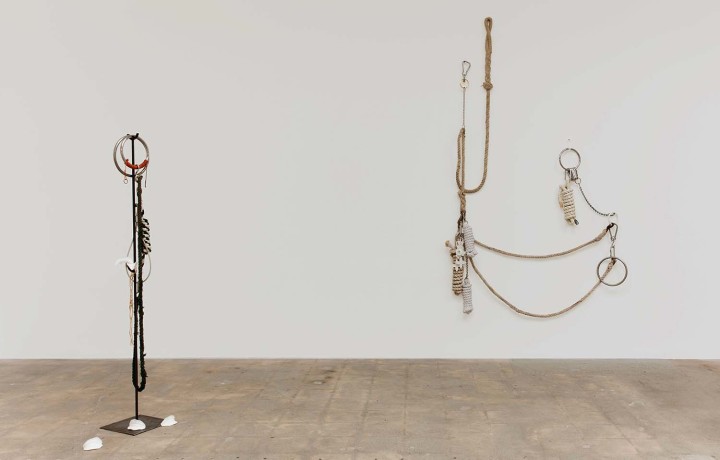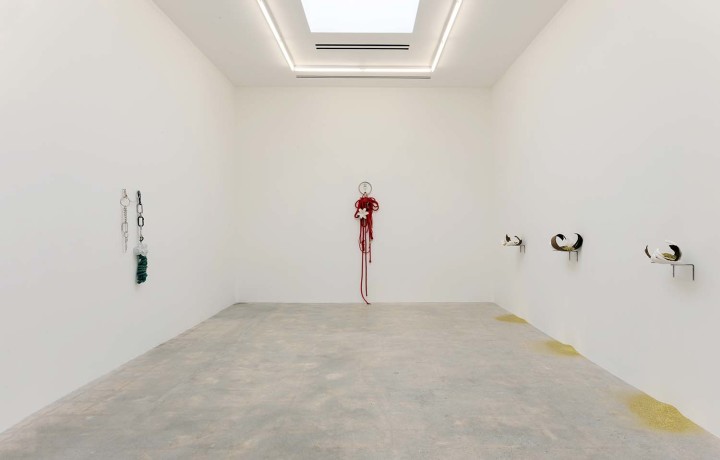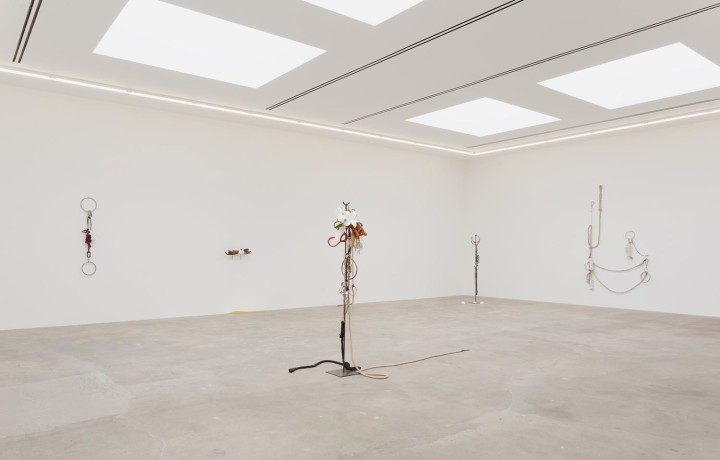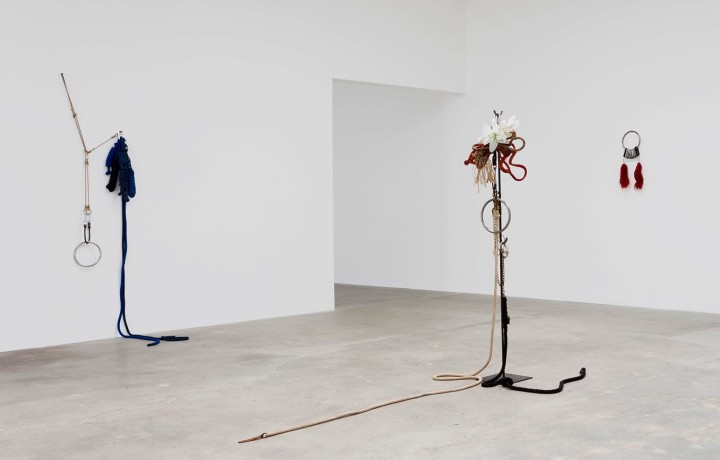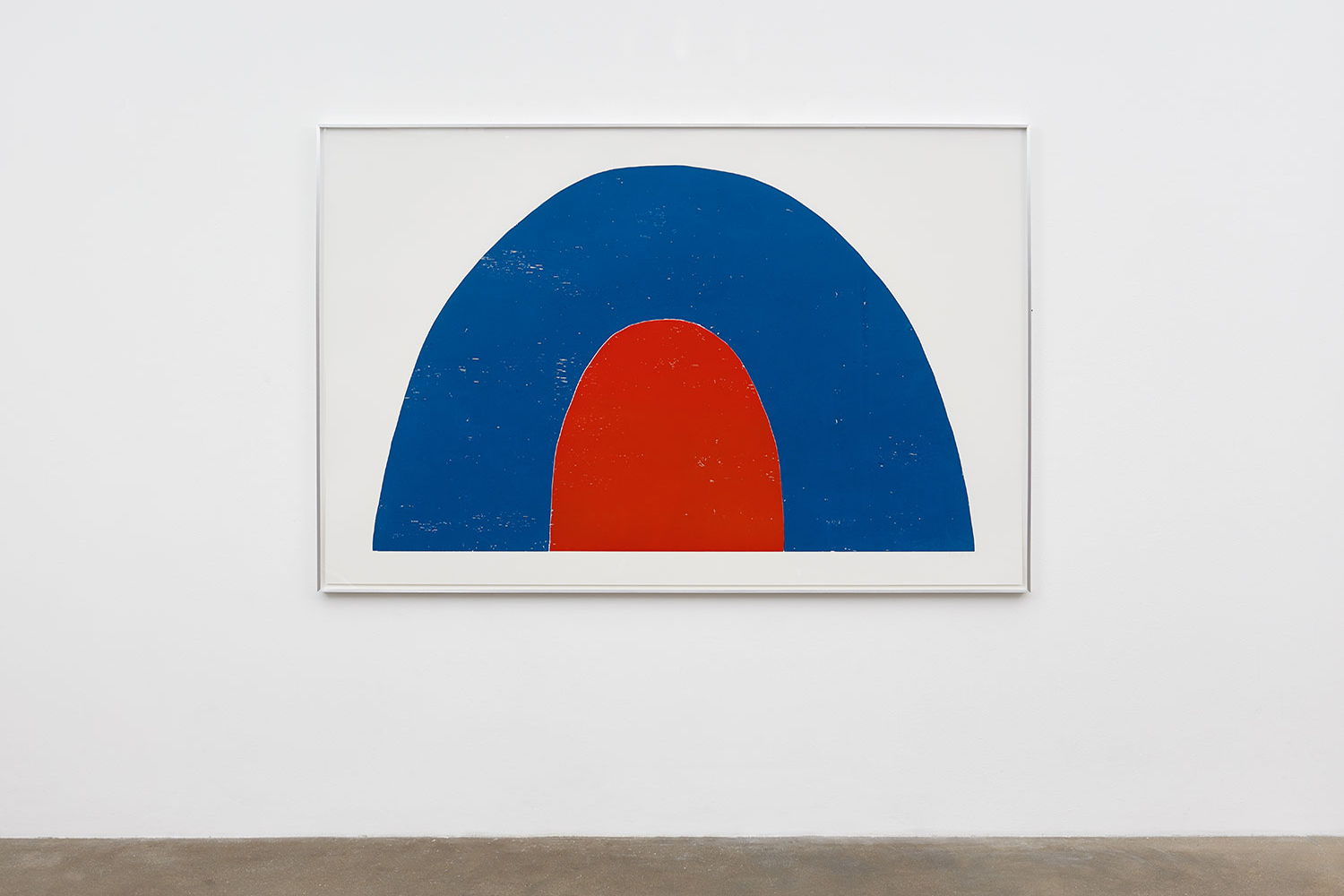To be left with a mess: a pair of mangled headphones, a car to sell, arrangements to be made (floral, funerary, and otherwise), certificates to draw up, a body to “handle.” Logistics aside, the days that follow death are often experienced — by the surviving — as a state of intoxication, a hyperawareness, a laser-sharp focus to which we are forced to apply the same vocabulary of the everyday for lack of an alternative code, though it would merit it.
It sounds trite to say that nothing else in that moment matters, as things recede in urgency. In this version of living, reason and strategic hierarchies have been upset; the worst, having arrived, is no longer anticipated. There is a freedom, a release, an unleashing to grief that undoubtedly explains its oft-noted likeness to sex.
There are two rooms to this show; one is lined with a display of harnesses and hooks, ikebana-like compositions held together by ropes, Shibari suspension rings, funerary flowers and equestrian halters, each in a tastefully paced color palette. They are visibly used. They are decorative accessories that betray recent pain, restraint, and pleasure. At off-center intervals of the room, two of the rope-ring-harness-hook-compositions are, eerily enough, freestanding. As a whole, they are leveled as instruments of torture, pleasure, and fashion.
In the second room, burnt pieces of bark protrude from the wall, each one mirrored by a 3-D-printed double of its form, and each one overflowing with — unexpectedly — glitter. Like poltergeist hands pushing out of walls, the low-hung pieces stress the surrogacy of their materials: plastic for wood, glitter for ash, and by doing so complicate the casual, sophisticated, finish-fetish read one might have had of this coded show.
It is safe to put these works in conversation with Senga Nengudi’s flesh-colored stockings-and-sand sculptures activated by elaborate pulling and stretching performances, they are sculptures that invoke resistance. Or with Longacre-White’s peer and friend Rachel Foullon’s invented-tools sculptures, which make new, colorful rope, leather, and metal compositions that weaponize art with feminine mystique. In both instances, as in Longacre-White’s sculptures, a series of knots tighten and complicate the individual pieces; a chain reaction of micro-compositions unfold as the viewer approaches the work.
All this drama, however, is scaled back by a little bit of humor: the sculptures in the exhibition are neutralized by its iodine title, “New Sculptures 2016–17,” and the sex/death/suicide/longing/desire effect is diffused as the viewer remains at a safe “screen distance,” a convention that hearkens to entertainment: leaving us to wonder whether, when forced to contend with these heightened life experiences, art can/should be the illustration of such things, or perhaps embody the tools to achieve the thing itself. In this case, these compositions of weapons and toys are easily both.

